 What Are The Potential Consequences Of Not Repairing A Damaged Drain
What Are The Potential Consequences Of Not Repairing A Damaged Drain
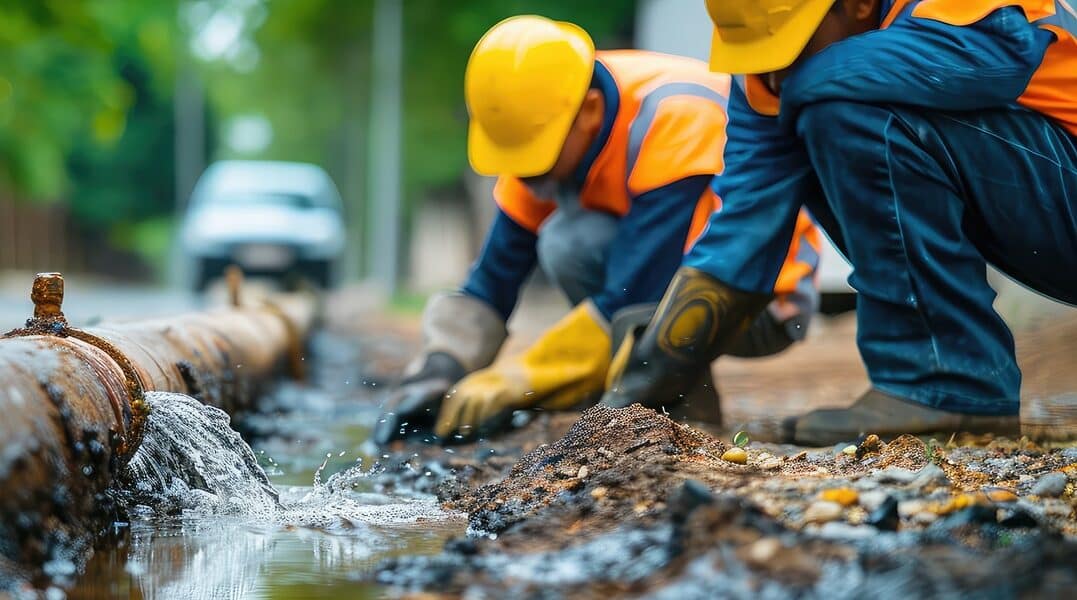
Maintaining a healthy drainage system is paramount for the longevity and safety of any property. A well-functioning drainage system ensures that water flows away from the property, preventing a myriad of potential issues. However, when these systems are neglected, property owners may face significant risks that can lead to costly and complex problems.
The Risks of Neglect
A neglected drainage system can lead to severe structural damage, such as foundation cracks and subsidence, which compromise the building’s integrity. Moreover, persistent dampness can foster the growth of mould and bacteria, posing serious health risks to occupants. Early detection and intervention can prevent these issues from escalating into larger, more expensive repairs.
Preventing Larger Issues
Proactive maintenance and timely repairs are crucial in averting the long-term consequences of drainage system failure. By addressing problems early, you can avoid the extensive damage that can occur when issues are left unresolved. This guide will delve into the potential consequences of not repairing a damaged drain, providing you with the necessary knowledge to protect your property’s health and value.
Recognising Signs of Drainage System Failure
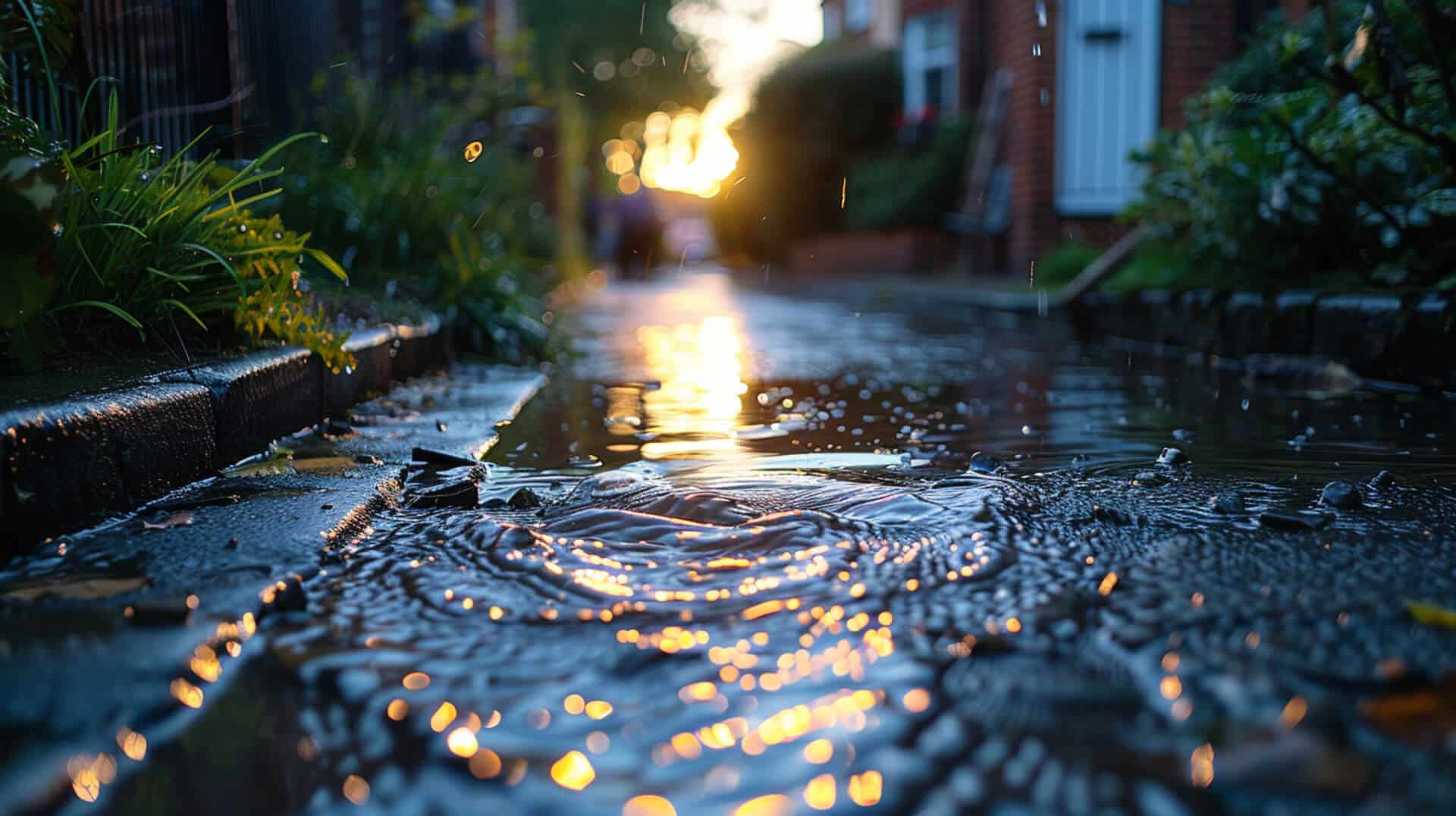
Early detection of drainage issues is crucial in preventing the escalation of damage. Property owners should be vigilant for signs that may indicate underlying problems with their drainage systems.
Indicators of Potential Blockage and Damage
Observing the performance and condition of your drainage system can reveal several warning signs. Slow drainage is often the first indicator of a blockage. If water is not flowing freely, it may suggest an obstruction in the pipes. Foul odours emanating from drains are also a telltale sign that waste is not being properly expelled from the system. Additionally, water pooling in unexpected areas can indicate a leak or blockage that is preventing water from draining correctly.
Unusual Lawn Growth and Foundation Cracks
Anomalies in lawn growth, such as patches of particularly vibrant grass, may signal a leaking underground drain enriching the soil in that area. Foundation cracks can also be symptomatic of drainage problems. When water does not drain away from the building, it can accumulate and exert pressure on the foundation, leading to structural damage over time.
The Significance of Foul Odours and Water Pooling
The presence of persistent bad smells and standing water should not be overlooked. These conditions can contribute to an unhealthy environment, attracting pests and potentially leading to more serious health and structural issues if not addressed promptly.
By recognising these early signs and understanding their implications, property owners can take timely action to mitigate the risks and maintain the integrity of their drainage systems.
The Impact of Blocked Drains on Structural Integrity
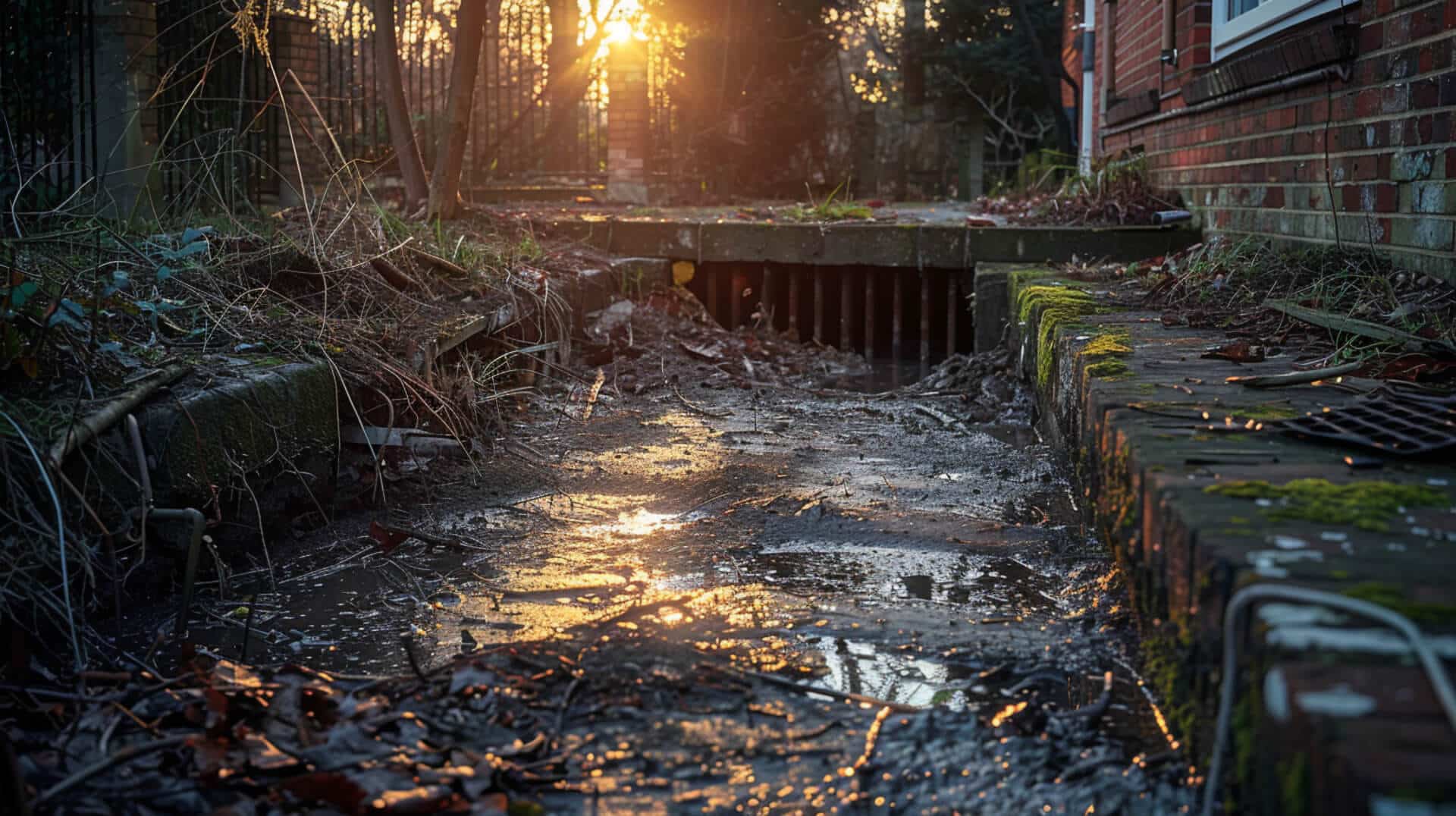
Blocked drains can have a profound effect on the structural integrity of buildings. When drainage systems are compromised, the consequences can extend far beyond the immediate inconvenience.
Undermining Building Foundations
Water from damaged or blocked drains can seep into the soil beneath structures, leading to soil erosion or expansion. This, in turn, can cause the foundation to settle unevenly or move, resulting in cracks and potential structural failure. The stability of the entire building can be jeopardised if these issues are not addressed in a timely manner.
Escalation of Repair Costs
The longer drainage problems are left unresolved, the more extensive the damage can become. This escalation can lead to significantly higher repair costs as more complex solutions are required. Early detection and repair are crucial in managing these potential expenses.
Long-Term Consequences on Property Value
Structural damage can have a lasting impact on property value. Prospective buyers or tenants may be deterred by the history of drainage issues, leading to a decrease in market value. Ensuring that drains are well-maintained is essential for preserving the financial investment in a property.
This section builds upon the initial introduction of risks by delving deeper into the specific structural challenges posed by neglected drainage systems. It highlights the importance of recognising and addressing drainage issues to protect the long-term integrity and value of properties.
Health Hazards Stemming from Damaged Drains
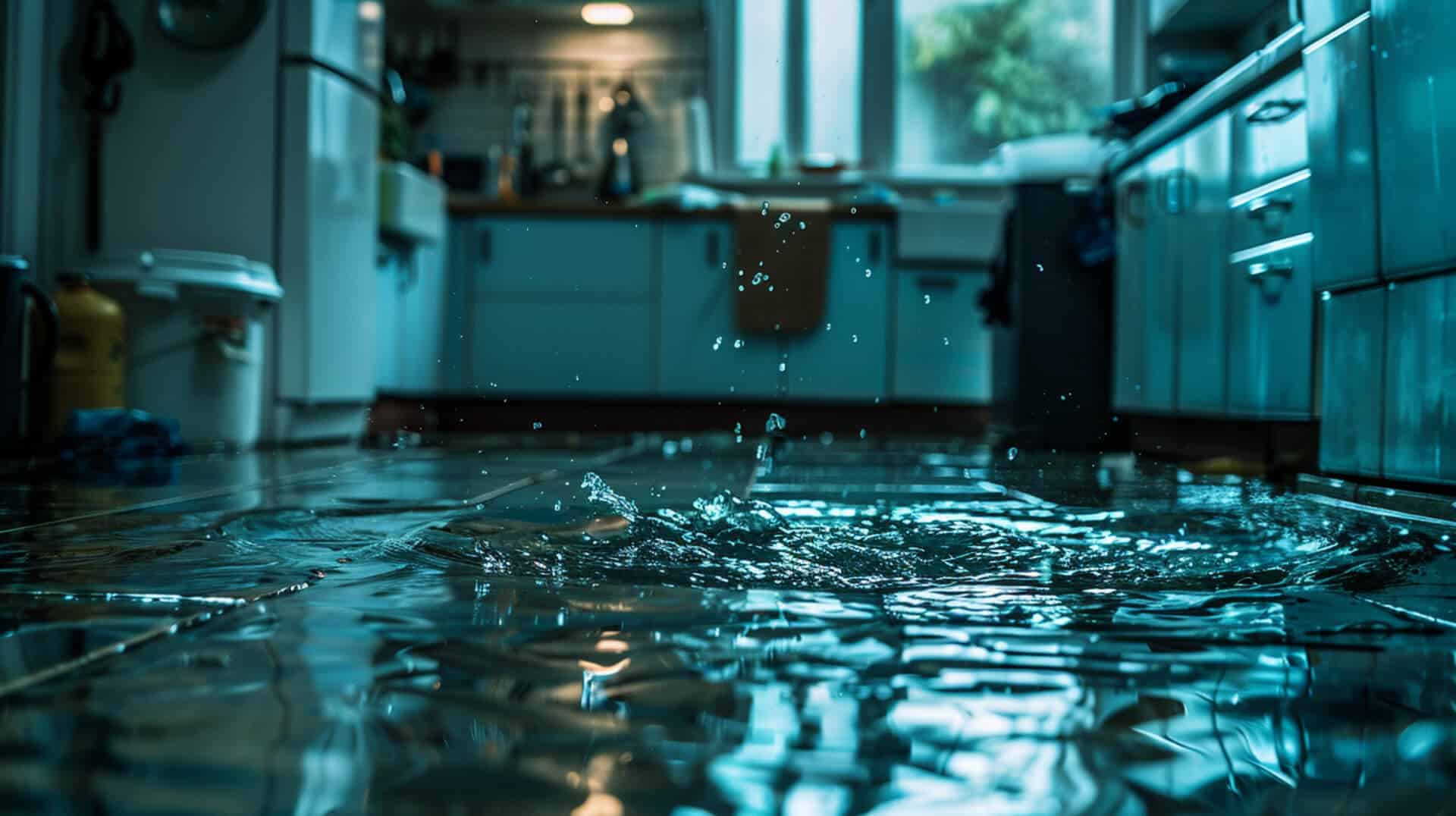
Damaged drains can lead to the accumulation of stagnant water, which becomes a breeding ground for bacteria and mould, posing significant health risks to occupants.
Risks Posed by Bacteria and Mould
Stagnant water in damaged drains can harbour harmful microorganisms, including bacteria such as E. coli and Legionella, which can cause serious illnesses. Mould growth, facilitated by damp conditions, can lead to respiratory issues, allergic reactions, and other health problems, particularly in individuals with compromised immune systems.
Vulnerable Populations
Individuals with pre-existing health conditions, the elderly, and young children are especially susceptible to the health risks posed by exposure to mould and bacteria from damaged drains. Their bodies are less equipped to combat the infections and allergic responses that can be triggered by these pathogens.
Understanding the potential health hazards associated with damaged drains is crucial. It not only emphasises the importance of timely repairs but also informs property owners of the risks to which they may be unknowingly exposing themselves and others. This knowledge is essential for maintaining a safe living environment and for making informed decisions about property maintenance and repair priorities.
Environmental Consequences of Neglecting Drain Repairs
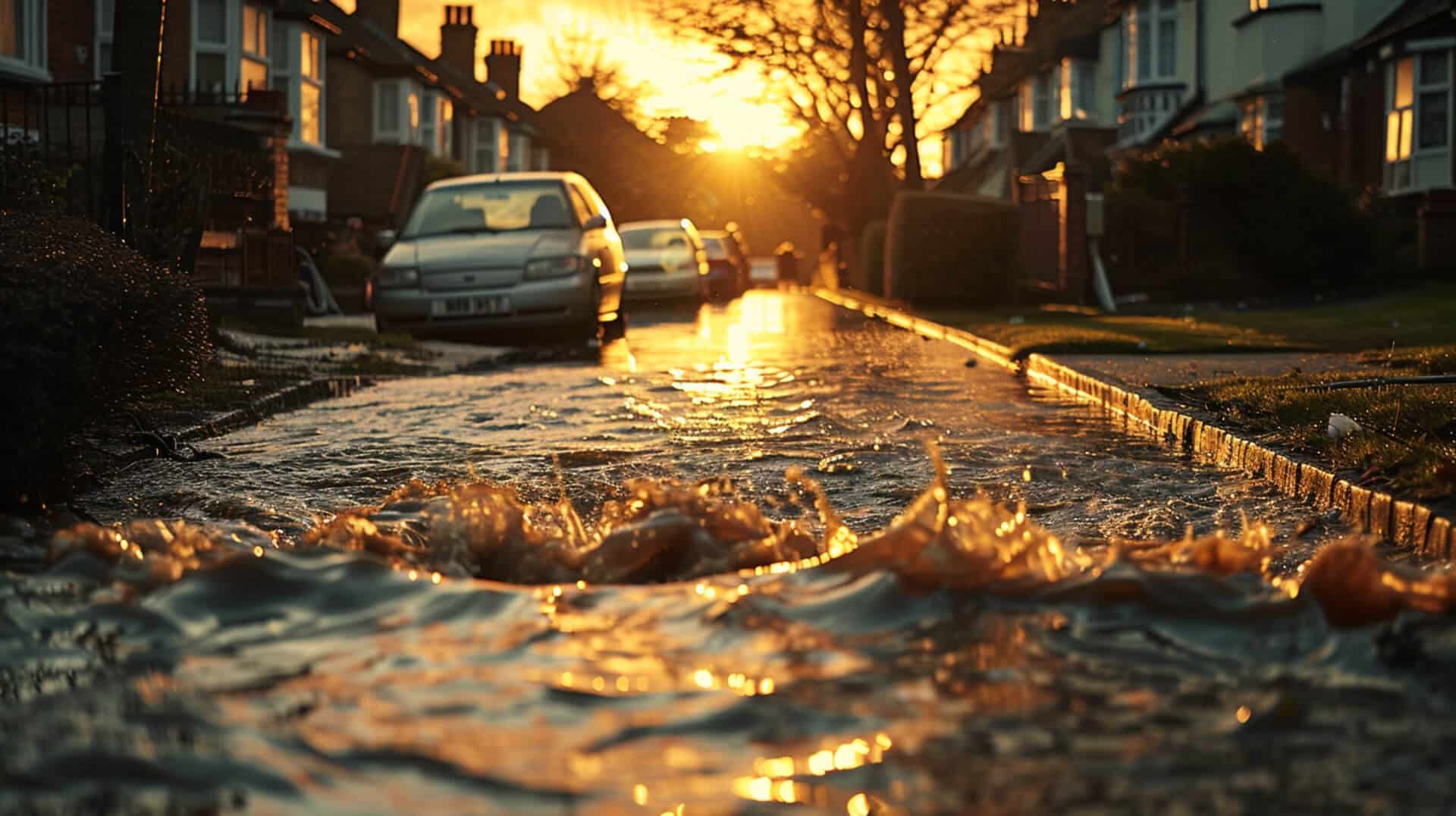
Neglecting drain repairs can lead to significant environmental degradation, affecting local ecosystems and water quality.
Contribution to Environmental Degradation
When drainage systems are compromised, untreated wastewater can seep into the ground and contaminate soil and water sources. This contamination can lead to a decline in local water quality and can be detrimental to both plant and animal life.
Role in Local Water Pollution
Blocked drains can cause overflow, which may result in pollutants entering nearby streams, rivers, and lakes. These pollutants can include harmful chemicals, bacteria, and other hazardous substances that are not adequately filtered out due to the blockage.
Importance for Wildlife
A healthy drainage system is vital for the well-being of local wildlife. Contaminated water sources can lead to a decrease in biodiversity, as animals and plants may not survive in polluted environments. Moreover, blocked drains can create stagnant water, which can become a breeding ground for pests like mosquitoes, further disrupting the local ecosystem.
This section connects to the broader implications of drainage system maintenance by highlighting the environmental responsibilities of property owners. Ensuring that drains are properly maintained and repaired not only protects the property but also safeguards the surrounding environment, contributing to the overall health of the local ecosystem.
Economic Implications for Property Owners
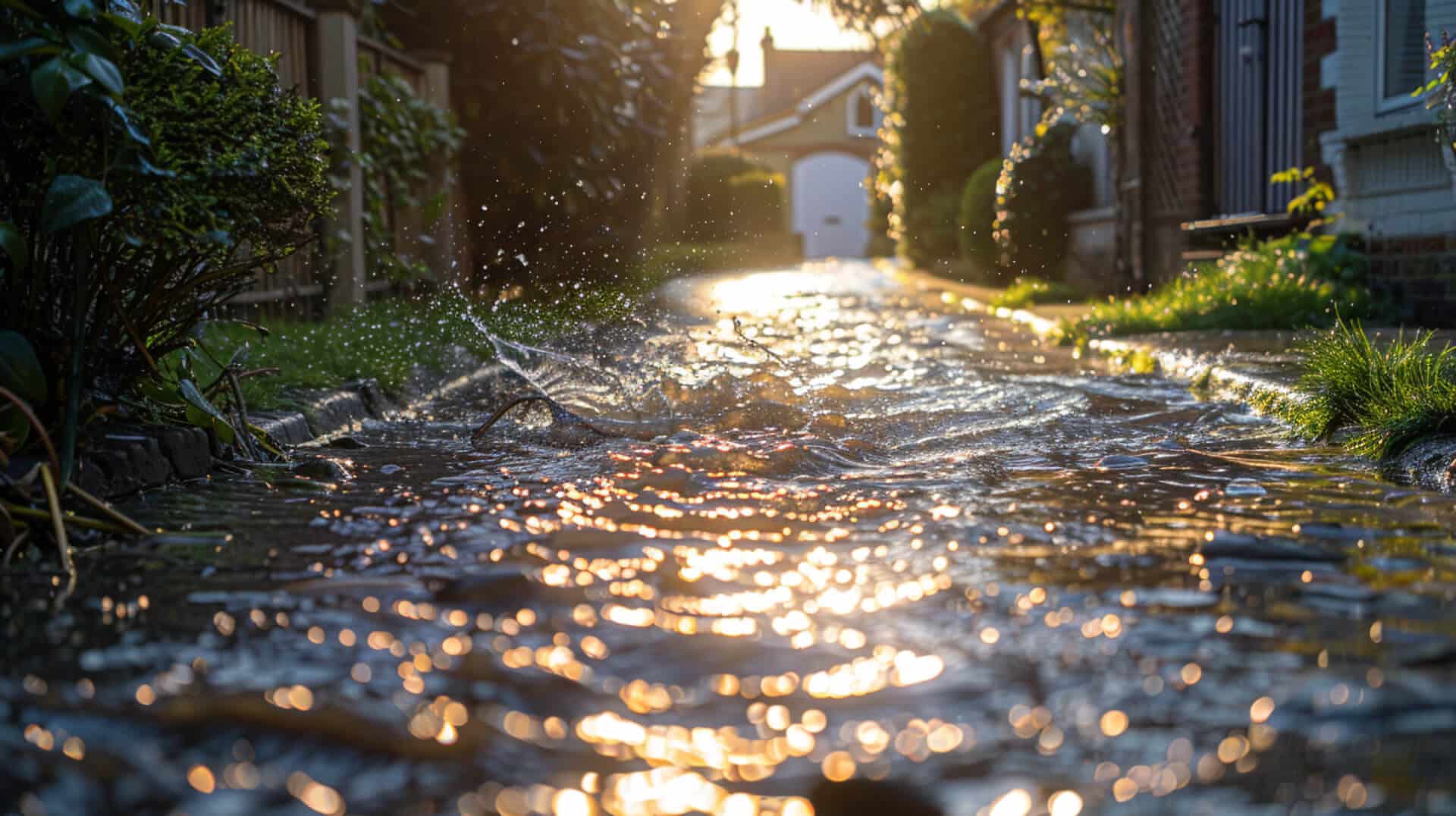
The decision to delay drain repairs can have far-reaching economic consequences for property owners, including increased costs and potential legal liabilities.
Increased Costs from Delayed Repairs
When drain damage is not promptly addressed, the severity of the issue can escalate, leading to more complex and costly repairs. Over time, minor blockages can turn into significant obstructions or structural damage, requiring extensive intervention. This progression often results in higher expenses compared to the cost of immediate, simpler repairs.
Impact on Property Devaluation
Damaged drains can significantly affect a property’s market value. Potential buyers are likely to be deterred by the prospect of inheriting unresolved drainage issues, which can lead to a decrease in the property’s selling price. In some cases, the presence of drainage problems may even impede the sale of the property altogether.
Cost-Effectiveness of Preventive Maintenance
Preventive maintenance is generally more economical than emergency repairs. Regular checks and timely interventions can prevent the development of severe drainage problems, thereby avoiding the high costs associated with emergency situations.
This section builds upon the earlier discussions of structural and health risks by exploring the financial ramifications of neglected drain repairs. It underscores the importance of proactive maintenance and timely action to mitigate economic losses and preserve property value.
Flooding Risks Due to Inadequate Drainage
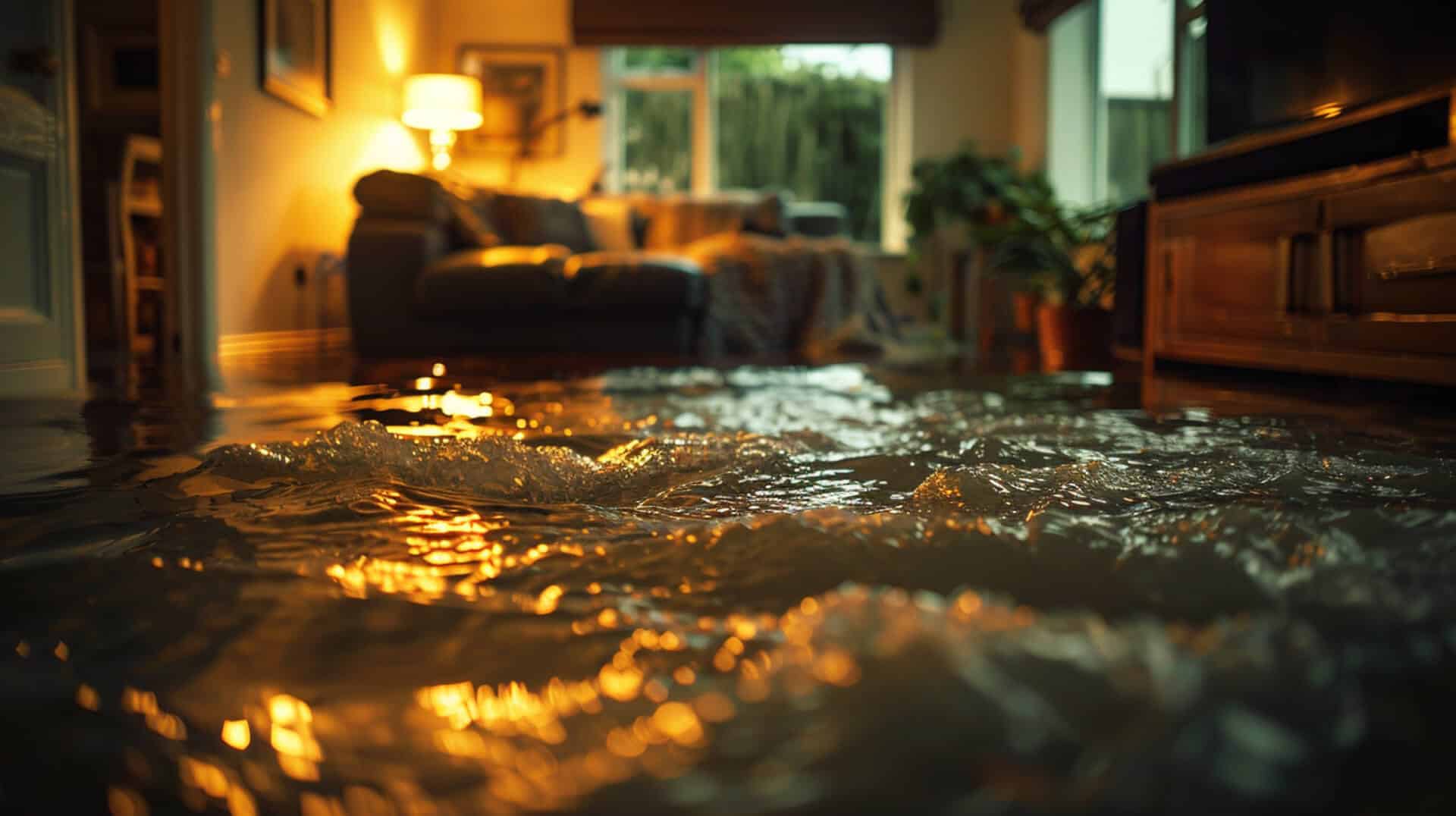
Understanding the conditions that lead to flooding is essential for property owners to mitigate the risks associated with blocked drains.
Conditions Leading to Flooding
Blocked drains can prevent water from flowing away from your property, leading to an accumulation that may result in flooding. This can occur during heavy rainfall or when the drainage system is overwhelmed by debris, causing water to back up and overflow.
Exacerbation of Previous Issues
Flooding can intensify the structural and environmental issues previously discussed. Water intrusion into the foundation can accelerate damage, and the overflow can spread contaminants, worsening environmental impacts.
Immediate and Long-Term Costs
The costs associated with flood damage can be substantial. Immediately, there may be a need for emergency repairs and property restoration. Long-term, the effects of flooding can lead to increased insurance premiums and reduced property value.
This section integrates the cumulative knowledge of risks presented so far by highlighting the severe consequences of flooding due to inadequate drainage. It emphasises the importance of maintaining a functional drainage system to prevent such costly and damaging events.
Professional Versus DIY Repair Approaches

When it comes to repairing a damaged drain, the complexities involved often necessitate professional expertise.
The Risks of DIY Drain Repairs
DIY approaches to drain repair may seem cost-effective, but they carry significant risks. Without the proper tools and knowledge, well-intentioned repairs can lead to further damage or fail to address the underlying issue. This can result in additional costs and the potential for the problems outlined in earlier sections to worsen.
Advantages of Professional Consultation
Professionals in the field of drainage repair come equipped with specialised equipment and expertise. They are trained to diagnose issues accurately and implement solutions that are both effective and compliant with local regulations. Their experience allows them to address not just the symptoms of drainage problems but the root causes, ensuring a more permanent resolution.
Addressing Complex Drainage Issues
Professionals are adept at navigating the complexities of drainage systems, from identifying blockages and structural damage to implementing the most appropriate repair methods. They can also provide valuable advice on maintenance and prevention, helping you avoid future issues.
This section offers practical advice, drawing on the insights provided throughout the guide. It underscores the importance of professional services in maintaining the health of your drainage system and protecting your property from the consequences of inadequate repairs.
Navigating Insurance and Repair Costs
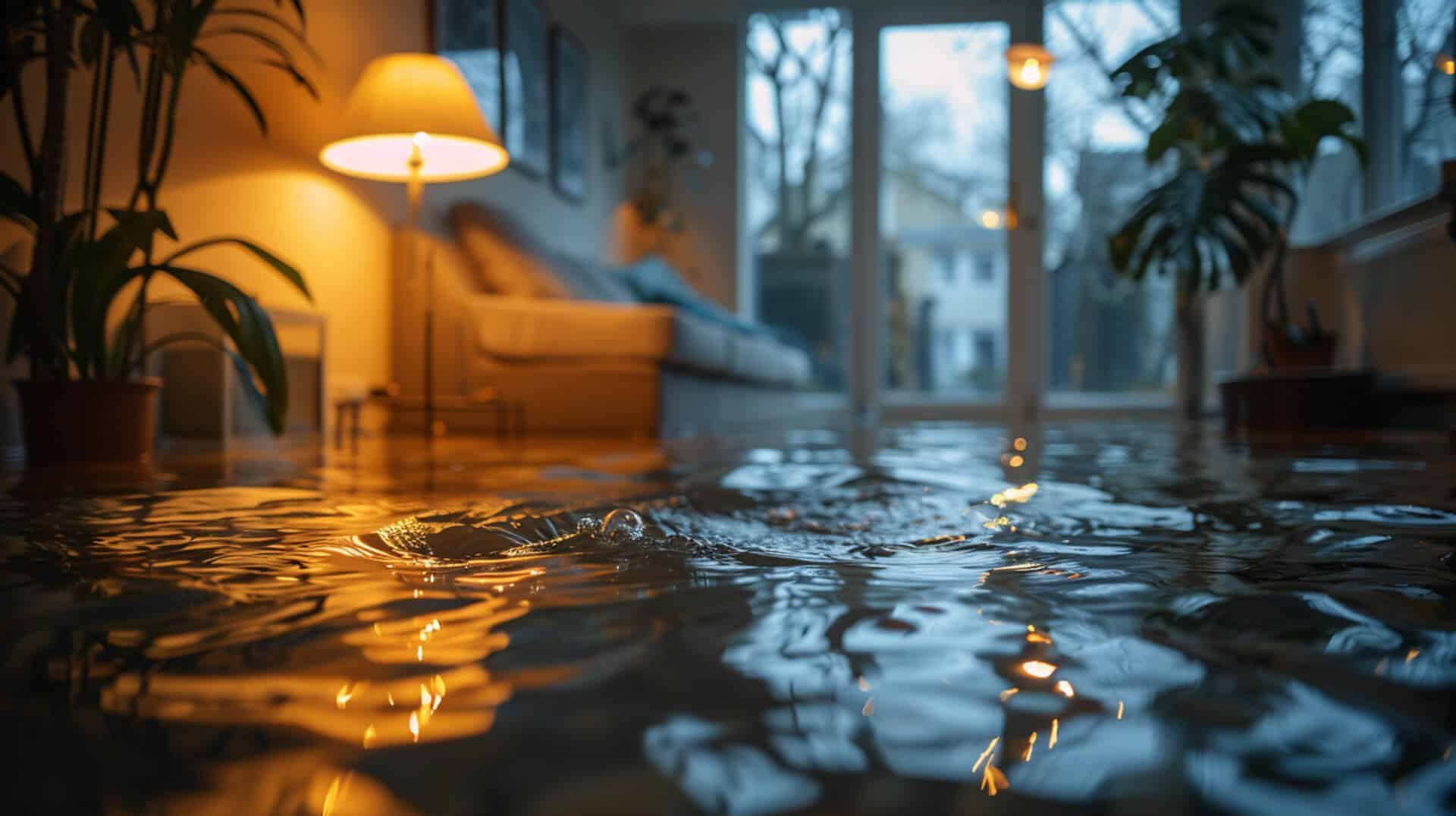
Understanding the factors that influence the cost of repairing a damaged drain and how insurance policies apply is crucial for property owners.
Factors Influencing Repair Costs
The cost of repairing a damaged drain can vary widely. Key factors include the extent of the damage, the drain’s location and accessibility, and the chosen repair method. Simple blockages may require only minor intervention, while more severe damage, such as a cracked drainpipe, could necessitate extensive repairs or even replacement.
Insurance Policy Coverage for Drain Repairs
Insurance policies typically cover accidental damage to drains, but there are often exclusions for wear and tear or damage due to lack of maintenance. It is essential for you to review your policy details to understand what is and isn’t covered. In some cases, additional coverage may be advisable to protect against potential repair costs.
The Importance of Insurance Understanding
For property owners, comprehending the nuances of insurance coverage is vital. It ensures that in the event of drainage system damage, you are aware of your entitlements and can make informed decisions about filing a claim or covering the costs out-of-pocket.
This section provides a practical continuation of the economic implications discussed earlier, offering guidance on how to navigate the financial aspects of drain repair and the role of insurance in mitigating these costs.
Preventive Measures and Maintenance Tips
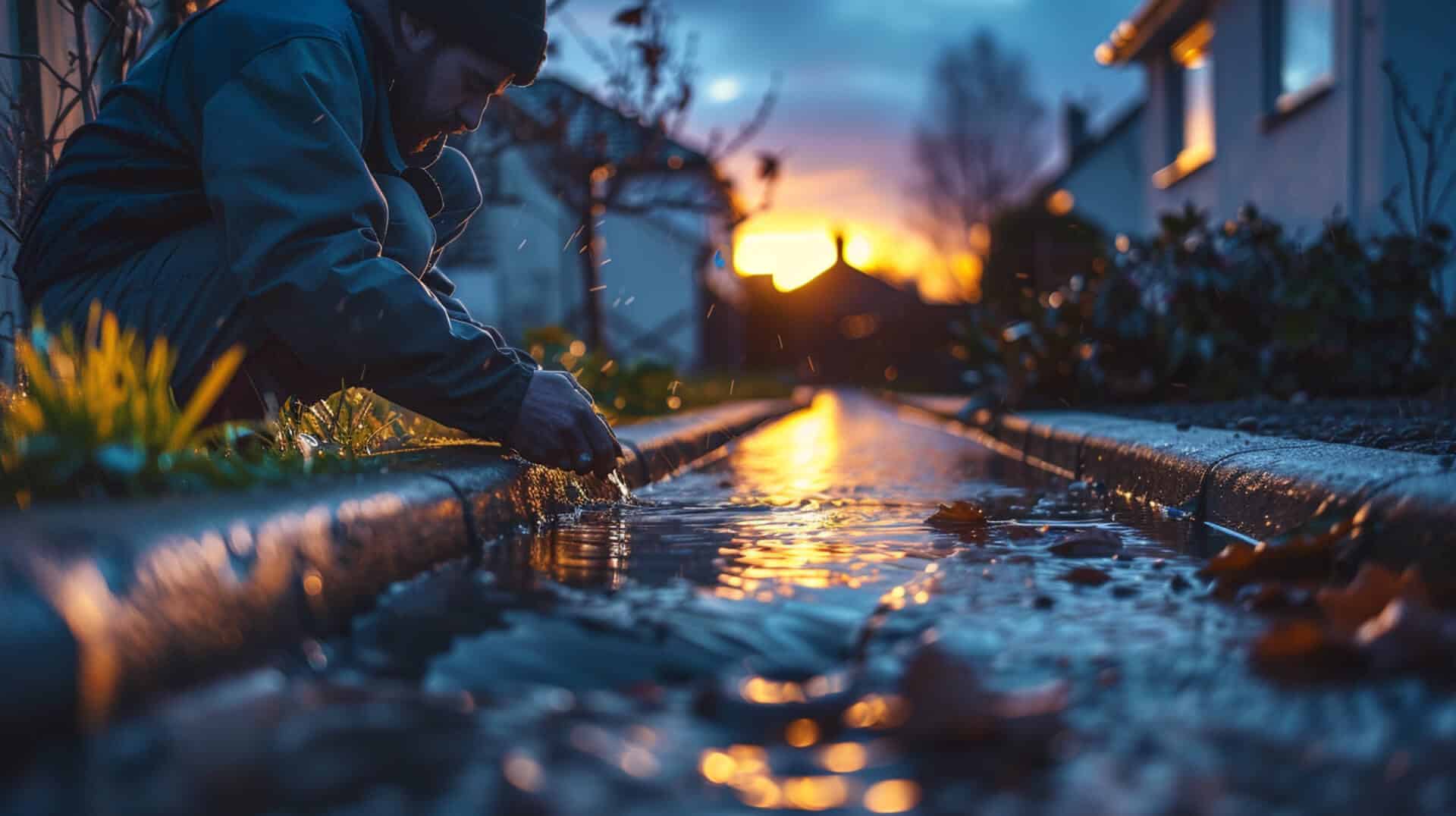
Regular maintenance is key to preventing the severe consequences of drainage system neglect. By conducting routine checks and being mindful of what enters the drains, property owners can avoid the costly and hazardous outcomes discussed earlier.
Regular Checks to Prevent Major Drain Issues
To prevent major drain issues, it is advisable to conduct periodic inspections of your drainage system. Look for early signs of blockage, such as slow drainage or unpleasant odours. Regular checks can identify problems before they escalate into more significant issues.
Avoiding Common Causes of Blockages
You can avoid common causes of blockages by being cautious about what is disposed of down the drain. Items such as grease, hair, and non-biodegradable materials can cause obstructions and should be disposed of properly, not through the drainage system.
The Importance of Ongoing Maintenance
Ongoing maintenance, including professional cleaning and inspections, can help ensure that your drainage system operates efficiently. This proactive approach can prevent the accumulation of debris that leads to blockages and the subsequent need for more extensive repairs.
By adhering to these maintenance tips, you can help safeguard your property against the potential consequences of drainage system failure. Regular vigilance and proper care are essential in maintaining the health of your drainage system and avoiding the issues outlined throughout this guide.
The Role of Professional Services in Drainage Maintenance
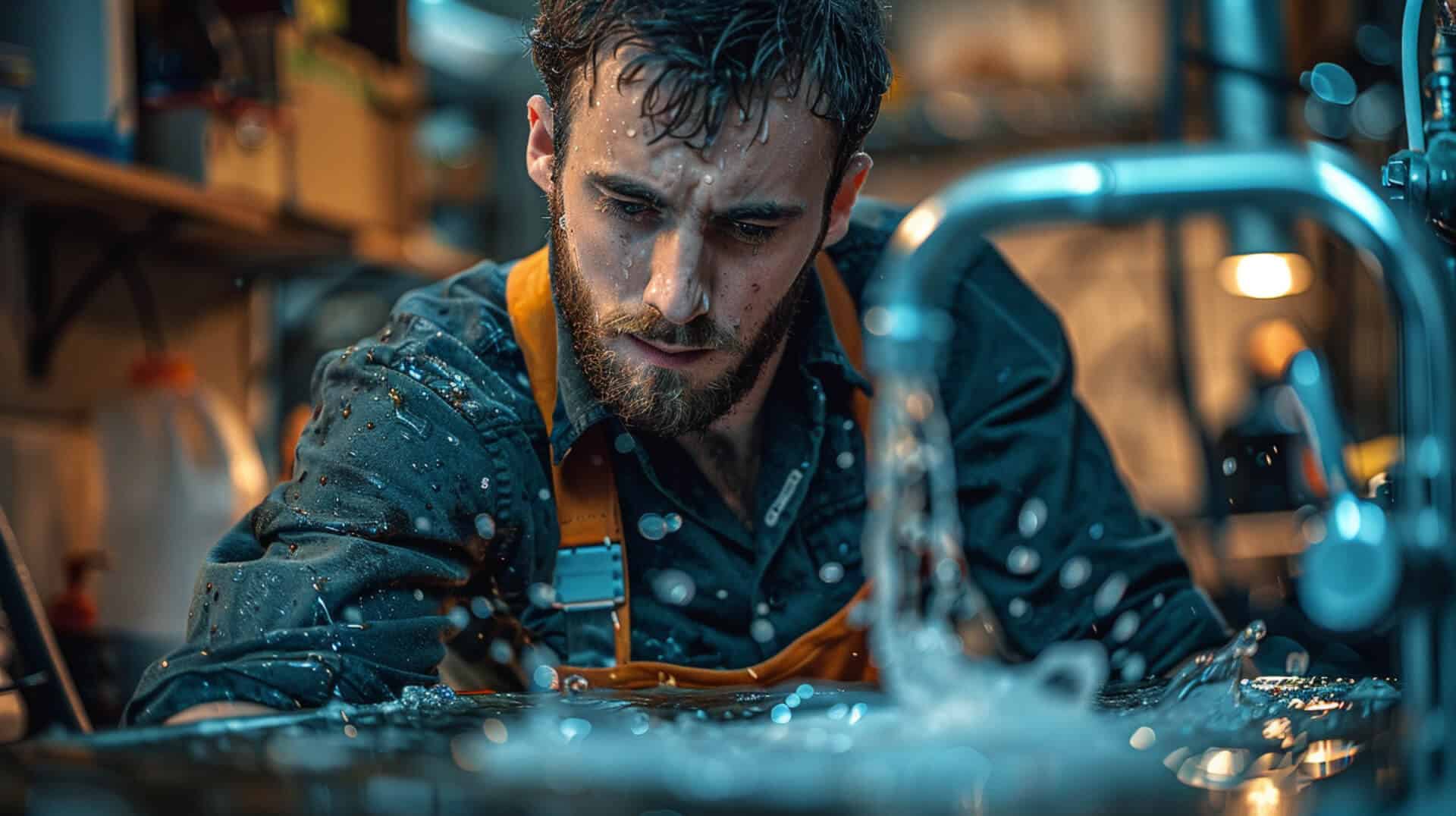
Professional drainage services offer significant advantages when it comes to maintaining the health of your property’s drainage system.
Advantages of Professional Drainage Services
Professional services provide expertise and specialised equipment that can be critical for diagnosing and resolving complex drainage issues. Experts in the field are trained to handle a variety of situations, from simple blockages to more severe structural damage.
Mitigating Risks with Expertise
Experts can mitigate the risks associated with damaged drains by:
- Conducting thorough assessments to identify the root cause of issues.
- Implementing targeted repairs that address both immediate concerns and potential future problems.
- Advising on preventive measures to maintain the integrity of the drainage system.
Importance of Experienced Professionals
Choosing experienced professionals is crucial for ensuring the long-term health of your property. Their knowledge and skills are invaluable in preventing the potential consequences of neglected drain repairs, such as structural damage, health hazards, and environmental impact.
This section ties back to the guide’s focus on professional versus DIY approaches by emphasising the value that professional services bring to drainage maintenance. By entrusting your drainage system to qualified experts, you can ensure that it remains in optimal condition, safeguarding your property and those who use it.
Importance of Prompt Drainage Issue Resolution
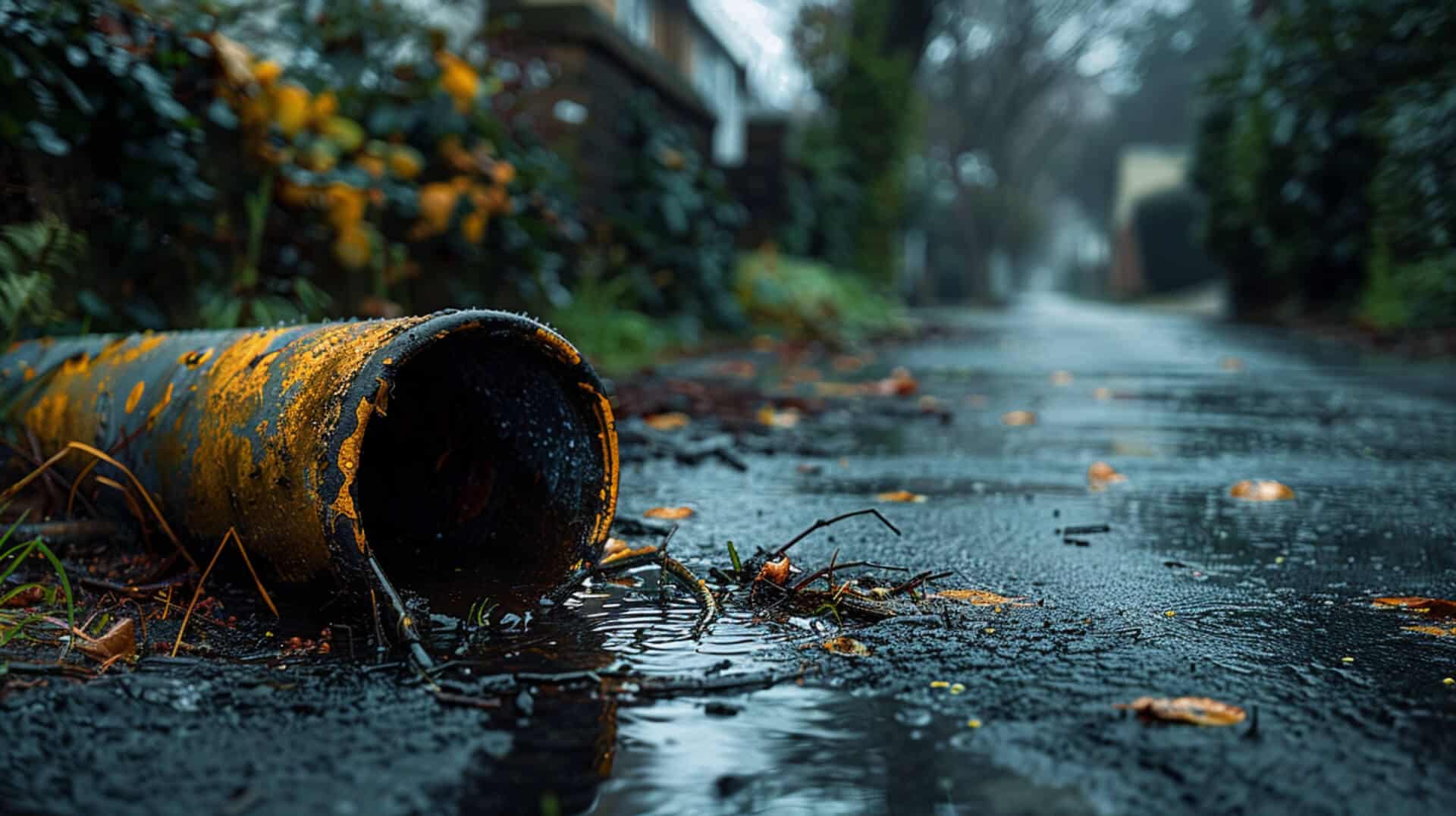
Addressing drainage issues promptly is essential for property owners to prevent the escalation of damage and associated costs.
Critical Nature of Timely Drain Repair
Neglecting repairs can lead to a host of problems, including structural damage, health hazards, and environmental issues. By taking immediate action upon noticing signs of drainage problems, you can avoid the more severe consequences that can arise from delayed maintenance.
Encouraging Awareness and Proactive Action
Awareness of the potential consequences of not repairing a damaged drain is the first step toward prevention. Property owners are encouraged to:
- Regularly inspect their drainage systems for signs of trouble.
- Seek professional assessments when issues are detected.
- Implement recommended repairs without delay.
Steps for Maintaining Drainage System Health
To ensure the longevity and functionality of your drainage system, consider the following steps:
- Schedule routine maintenance checks.
- Avoid disposing of materials that can cause blockages.
- Respond swiftly to any signs of drainage system failure.
This section reinforces the guide’s overarching message of the importance of maintaining a healthy drainage system. It encourages property owners to adopt a proactive approach to drainage maintenance, thereby safeguarding their property and contributing to a safer and healthier environment.
